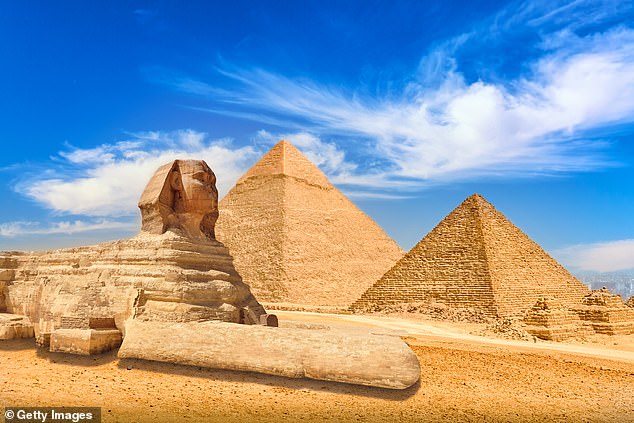
New Egyptian Sphinx Discovery Sparks Theory of Ancient Underground City
Mystery Deepens Around Possible Underground City Beneath Egypt’s Pyramids
New scans revealing a colossal vertical shaft beneath the Great Sphinx have reignited speculation about an ancient underground network near Egypt’s Giza Plateau. Italian researchers, who previously claimed to find hidden structures under the Pyramid of Khafre, announced the discovery of two massive chambers and a spiral-like staircase descending up to 4,000 feet below the Sphinx.
Presented at the Cosmic Summit—a conference exploring alternative archaeology—the findings face skepticism from mainstream scholars. However, the team insists their radar data suggests a sprawling subterranean complex that could rewrite ancient history.
[Image: Radar scan showing a shaft beneath the Great Sphinx]
Key Discoveries
Using SAR Doppler Tomography, a satellite radar method that detects subsurface vibrations, researchers mapped a shaft surrounded by a spiraling structure. Two square chambers (each 131×131 feet) were identified at depths of 2,000 and 4,000 feet. Team member Filippo Biondi, a radar expert, stated, “The Giza Plateau likely conceals an extensive underground city, linked to a forgotten civilization.”
Egyptologist Armando Mei noted similar features under all three main pyramids, suggesting a unified architectural design predating dynastic Egypt. He proposes the structures were built around 36,400 BCE—tens of thousands of years earlier than accepted timelines.
[Image: 3D map of underground chambers near the Sphinx]
Controversial Theories
The team’s hypothesis challenges mainstream views that the pyramids were solely royal tombs. Instead, they speculate the plateau was engineered by an advanced pre-historic society destroyed by a cataclysm, possibly a comet-induced flood around 12,000 years ago. Only the pyramids survived as “megastructures.”
Mei cites Chapter 149 of the Book of the Dead, referencing the “14 residences of the city of the dead” (Amenti). “The pyramids may mark the sealed entrance to this underworld realm,” he says. Biondi adds the deepest chambers could align with the mythical Hall of Records—a purported repository of ancient knowledge beneath Giza.
[Image: Illustration of the hypothetical Hall of Records]
Skepticism and Next Steps
While the technology behind the scans has been peer-reviewed, the latest findings await independent verification. Critics dismiss the claims as speculative, noting the lack of physical evidence. The team plans to publish a full study in 2026 and seek excavation permits from Egyptian authorities.
Alternate historians, like Graham Hancock, support the idea of a lost ice-age civilization, arguing survivors passed advanced knowledge to later cultures. “Humanity deserves to know our true origins,” Biondi urged.
[Image: Researchers discussing radar data at the Cosmic Summit]
If proven, these hidden networks could revolutionize our understanding of ancient engineering and human history. For now, the enigma beneath Egypt’s sands remains as tantalizing as ever.
Word count: 598


